Matador Network's Blog, page 1161
February 14, 2019
Best things to do in Illinois

Just as there’s more to life than money, there’s more to Illinois than Chicago. Known as the Prairie State for the thousands of square miles of open prairie that encompass the state, Illinois is wide open once you venture beyond the crowded confines of the big city. It offers many beautiful places to see, quaint towns to photograph, and breathtaking parks to stroll through. The best way to see everything Illinois has to offer is to hit the road and explore. Here’s where to start.
Enjoy natural wonders and local wines.

Photo: Jason Patrick Ross/Shutterstock
Starved Rock State Park is the most unique natural destination in Illinois, if not the entire Midwest, because it takes two things that are incredibly hot right now and blends them together. Those two draws — exploring natural wonders and drinking local booze — make the park a must-visit for craft culture lovers with a penchant for getting lost in the wilderness. The park is home to 18 canyons and more than 13 miles of hiking trails that take you by waterfalls, sandstone overhangs, and bluffs. You’re also likely to spot stunning wildlife along the way.
You can also camp here if you don’t feel like leaving, but if you’re looking for a more comfortable way to end a day book a room at the Starved Rock Lodge. The 1930s log lodge offers cabins and luxury rooms, along with a restaurant right on site. The cafe on the Veranda should not be missed, especially in fall, when the views of the shifting seasons are unrivaled, and you can almost smell the grape harvest happening in the nearby wine country. The fact that all of this is less than two hours from Chicago is icing on the cake.
Hike through incredible rock formations.

Photo: Tonya Kay/Shutterstock
Harrisburg, Illinois, is home to a beautiful sanctuary called Garden of the Gods, tucked in the expansive Shawnee National Forest. Here you’ll find a variety of spectacular rock formations, and the wilderness trails offer the perfect excuse to hop out of the car and stretch your legs. Even if your group isn’t up for a long hike, the well-maintained observation trail offers a striking overview of the area. This is a beautiful place to watch the sun rise or set over breathtaking views from the top of the natural rock outcroppings.
Use historic Galena as your outdoor adventure basecamp.
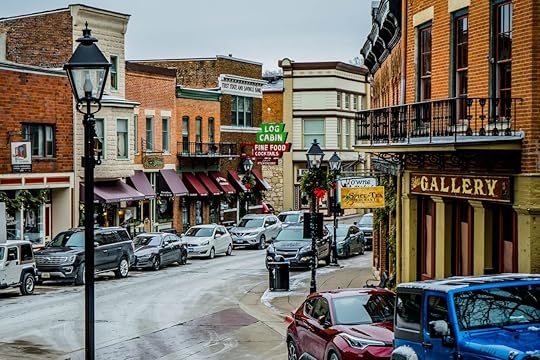
Photo: StelsONe/Shutterstock
Galena holds the unofficial title of Illinois’ most quaint city. For a town of just 3,500, Galena offers some of the most handsome architecture in the state, reflecting the town’s rich history. Although the town was originally settled in the 1600s, Galena boomed the early 1800s as a major mineral rush drew more than 10,000 people to the area. That rush was anchored by the mineral — alternately called galena or glance — from which the town draws its name.
Galena is the perfect spot to base yourself for outdoor adventures in the surrounding hills and forest, and it has a ski resort to hit during the day. After enjoying an apres ski session at Gobbie’s, walk over to The Market House or Vinny Vanucchi’s for dinner. The town has a handful of lovely spa resorts to relax and unwind in after your outdoor adventures, most within walking distance of Main Street and with views of the surrounding countryside. While Galena is relatively quiet during winter, it brings a dose of mountain town flare to the heart of the Midwest.
See the ruins of an advanced civilization.

Photo: PhilipR/Shutterstock
Cahokia Mounds is located in Collinsville, Illinois. If you’ve never heard of either Collinsville or Cahokia, you’re not alone — but know that you’re in for a treat at these fascinating ruins. Less than 800 years ago, Cahokia had a population greater than that of London. The area was home to the most advanced settlement north of Mexico, developed by the Mississippians tribe who lived in settlements along the Mississippi River until about 1600. They created a wide variety of elevated structures from the earth and turned them into practical homes for both everyday living and monumental public works that have maintained their grandeur for centuries. Cahokia Mounds gives off a bit of an Egyptian vibe, with intricately designed mounds dominating the landscape.
Appreciate the legacy of Abraham Lincoln.
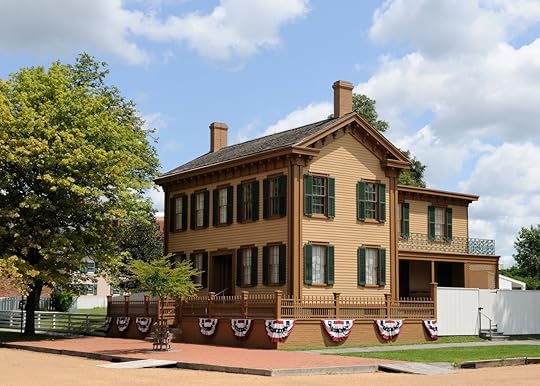
Photo: Nagel Photography/Shutterstock
Despite being the state capital, Springfield is often forgotten by visitors. Don’t be one of them. The city is where history comes alive in Illinois. First off, it’s home to more Abraham Lincoln memorial sites than anywhere in the nation, including the late President’s former home and the library named in his honor. You can also explore the Lincoln Tomb and his law offices to round out a full day of Lincoln-themed revelry. Beyond the Lincoln sites, Springfield also offers many classic diners — perfect even for those just passing through on their way between St. Louis and The Windy City. 

More like this: Indianapolis is the new cultural hotspot of the Midwest
The post Here’s why Illinois is still awesome even if you skip Chicago appeared first on Matador Network.

Best airports to shop at duty-free

If you’re often tempted to take home a haul from the airport’s duty-free shops, there’s one thing you need to know before you stuff your carry-on with goodies: You’re not necessarily getting a good deal.
A duty-free store is where you can buy certain goods without the added import or export tax that a country normally tacks on. Typically, the best duty-free deals are on liquor and tobacco products, since those are the most heavily taxed items in normal stores. Duty-free stores also often carry makeup, perfume, designer purses and shoes, electronics, and jewelry, but these items are not always priced better in a duty-free shop than in a regular store, so do your research before you buy. But if you’re in these eight destinations, shop away — the duty-free bargains are worth it.
1. Iceland
Duty Free Iceland, in Keflavík, is one of the best places to shop duty-free. It’s tax-free, open day and night, available to both arriving and departing passengers (regardless of origin or destination), and carries both international products and Icelandic specialties, including Icelandic cosmetics, candies, spirits, and beers. This makes it the ideal spot to purchase items you’ll need on your trip or bring back special souvenirs to enjoy at home. Best of all, the prices here are up to 50 percent off the prices you’ll find in the country once you leave the airport, so it’s worth grabbing a bottle or two of booze after your flight arrives, so you don’t have to pay an exorbitant amount for a drink back at the hotel.
2. South Korea

Photo: Yury Stroykin/Shutterstock
If you’re into designer fashion, Seoul’s Incheon International Airport may be your next preferred destination. That’s because it’s home to the world’s first Louis Vuitton airport store, so you can get your hands on the brand’s luxury goods without paying your country’s added import/export fee. Foreign luxury goods tend to receive a hefty markup, which means the airport duty-free store can be a great place for those in the market to purchase them. In addition, the selection at Incheon is huge; the airport has over 90 duty-free stores, such as Burberry, Chanel, Rolex, and more.
3-5. US Virgin Islands, Guam, and American Samoa
Some call the US Virgin Islands — St. Croix, St. John, and St. Thomas — the best duty-free shopping in the Caribbean. That’s because the duty-free shopping allowance here is $1,600, which is double that of many other places, and you can take home up to six bottles of liquor, as long as one of them is a product of the islands. Fortunately, both Cruzan and Captain Morgan have rum distilleries in the US Virgin Islands.
The same goes for Guam, in the western Pacific Ocean, (a very popular destination with Asian shoppers) and American Samoa, in the South Pacific Ocean. These three countries are considered insular possessions of the United States, which means they’re subject to different tax rules than other countries: As long as you’re there 48 hours or more, your tax-free exemption is $1,600.
4. Cruise ships
[image error]
Photo: By Mikhail Markovskiy/Shutterstock
If you’ve ever taken a cruise, you may have noticed that, no matter what the cruise line or destination, every cruise ship has a duty-free store or even an entire duty-free shopping center, like on the new Celebrity Edge, with its onboard Cartier, Tiffany & Co., and Bulgari stores. This is for a reason: Duty-free stores on cruise ships tend to be able to offer great deals.
Because cruise ships remain in international waters except when in port, their duty-free shops can be open any time the ship is sailing. Liquor and cigarettes are two popular purchases for cruising duty-free bargain hunters. However, keep in mind that sometimes your home port will charge an import fee, as laws differ from state to state and country to country.
5. Caribbean islands
Other than US territories, the Caribbean region is known as one of the best places for duty-free shopping, due in large part to the Caribbean Basin Initiative (CBI). According to the Office of the United States Trade Representative (USTR), “The CBI is intended to facilitate the development of stable Caribbean Basin economies by providing beneficiary countries with duty-free access to the US market for most goods.”
Here’s what this duty-free access looks like for travelers: According to US Customs and Border Protection, “As a general rule, travelers to Caribbean Basin Initiative (CBI) countries are allowed an $800 duty-free exemption on their return to the US. You may include two liters of alcoholic beverages with this $800 exemption, as long as one of the liters was produced in one of the CBI countries.”
In other words, travelers can purchase more tax-free goods to bring home from the Caribbean than from other countries. Currently, there are 17 CBI countries, including the Bahamas, Barbados, Jamaica, and St. Lucia.
6. London Heathrow Airport
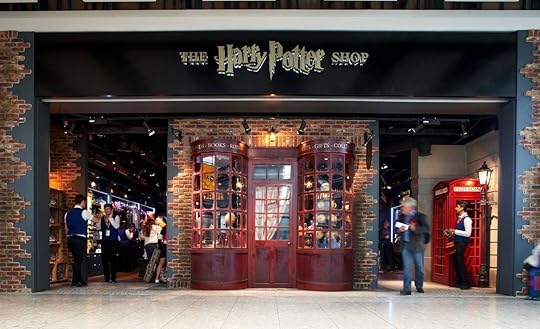
Photo: Heathrow Airport/Facebook
Sometimes, what makes for the best duty-free shopping isn’t necessarily the biggest discounts but the widest selection. In that line of thinking, London Heathrow is one of the best places for duty-free deals. As England’s largest airport, Heathrow has five terminals worth of retail space.
Major international brands are clustered in Terminal 3 (there’s around 40 high-end outlets to peruse), while travelers can find local English goodies tax-free in Terminal 5’s shops — think Cath Kidston, Mulberry, Paul Smith, Harrods, a Harry Potter Shop, as well as your last call for a Boots run — making England a great place for duty-free shopping no matter what kinds of goods you’re after. 

More like this: Alcohol is the best souvenir. Here’s how to prevent bottles from breaking.
The post 8 places where it’s actually worth shopping at duty-free appeared first on Matador Network.

Opportunity rover dies on Mars

NASA’s Opportunity Mars rover was the candle that just kept burning. Built to operate for just 90 Martian days, it lived for over 14 years until yesterday, when NASA officially pronounced it dead.
The Opportunity rover drove over 28 miles on Mars and spent over 14 years providing unique images of the Red Planet to scientists on Earth.
The death knell for the rover was a dust storm in Mars in June 2018 that obscured the Sun and covered Oppy’s solar panels. But the rover didn’t perish without sending out one final message. Transmitted in data bursts on June 10, 2018, the sad message roughly translates to: “My battery is low and it’s getting dark.”
Although NASA tried to wake Opportunity with many recovery commands and songs, including “Wake Me Up Before You Go-Go,” “Here Comes the Sun,” “Life On Mars?”, and “I Will Survive,” the rover was unresponsive. NASA even published its official “Opportunity, Wake Up!” playlist on Spotify for your listening pleasure.
At the Jet Propulsion Laboratory in Pasadena, project manager John Callas delivered an emotional speech to a hundreds of NASA workers in a packed auditorium. “This is a hard day,” he said. “Even though it’s a machine and we’re saying goodbye, it’s still very hard and very poignant, but we had to do that. We came to that point.”
The exploration of the Red Planet continues nonetheless. NASA’s InSight lander and Curiosity are both exploring Mars at the moment. 
H/T: The New York Times

More like this: These images from NASA will rock your world
The post NASA’s Mars Opportunity rover dies with a final, tear-jerking message appeared first on Matador Network.

February 13, 2019
Viking sites and museums in Norway

The Vikings were warriors, raiders, and explorers, and thanks to advanced sailing and navigational skills, they succeeded in becoming the first Europeans to set foot on mainland North America — perhaps even 500 years before Christopher Columbus landed in the Caribbean in 1492. Originating in present-day Scandinavian countries, the Vikings explored and often settled westward to Iceland, Greenland, and North America while spreading eastward to Central Asia, the Mediterranean, and North Africa. And while the Age of the Vikings has long since passed, their mark on history and on the country of Norway, in particular, is still strongly felt today. Here are seven must-see sights around Norway to channel your inner Viking and explore the ancient culture for yourself.
1. The Viking Ship Museum, Oslo
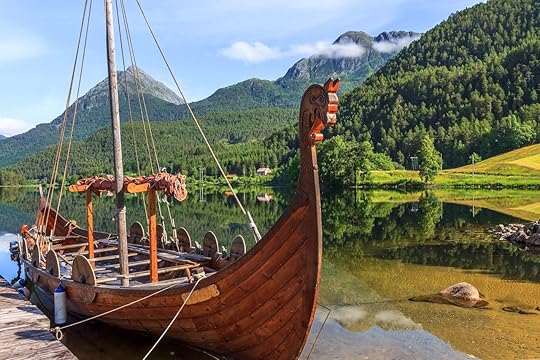
Photo: Zimneva Natalia/Shutterstock
Once ocean-going vessels, the artifacts on show at Oslo’s Viking Ship Museum inside the Museum of Cultural History are some of the best-preserved examples of Viking ships in the world. Here you’ll find the remains of a handful of the Vikings’ famed vessels. Unearthed from tombs in Gokstad, Oseberg, and Tune, each of the ships you see today was hauled inland to be used in elaborate burial rituals.
The Oseberg ship was discovered by a farmer, and once excavated, it took professionals over two decades to restore it to the way it is now displayed in the museum. The significance of this burial is that two women were buried along with the ship and numerous artifacts to accompany them on their journey. In contrast, the Gokstad ship contained the remains of a possible warrior, as cuts on the man’s skeleton indicate that he died in battle. His ornate burial aboard the ship indicates he was a man of great importance. And finally, the Tune ship is the least preserved but still significant in that only those ships of high ranking warranted a burial as such.
2. Nidaros Cathedral, Trondheim

Photo: saiko3p/Shutterstock
Legend has it that the Nidaros Cathedral was built on the site of the burial location of the first king of Norway, Olav Haraldsson. Haraldsson, who was killed in battle in 1030 at Stiklestad. After his death in battle, the slain Viking king’s body was transported to present day Trondheim where he was buried near a spring. Legend has it that a year after his burial, the grave was exhumed. Instead of a decaying corpse, the former king appeared to be sleeping, and the aroma of roses wafted from the grave. The Christian king was declared a martyr and given sainthood by the Catholic Church.
Since 1032, pilgrims have followed the network of trails, known as St. Olav Ways, to honor the slain Viking (and Christian) king leading to the northernmost Gothic cathedral in Europe. Admission to the cathedral is 100 Norwegian krone (about $11.50), but if you’re a serious history buff, opt for the combined ticket. For about 180 krone (about $20), you’ll also have access to the nearby Archbishop Palace Museum and the crown regalia.
3. Viking Village of Njardarheimr, Gudvangen
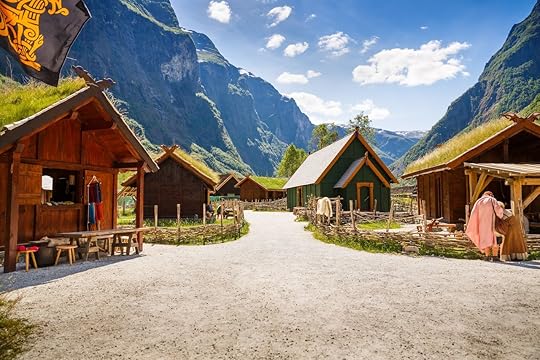
Photo: ruzanna/Shutterstock
Here’s a stop for those craving a day in the Viking life. This authentic Viking village, about two and a half hours northeast of Bergen, provides an opportunity to immerse yourself in the daily life of a Viking community. The region was once vital to trading, and to this day Gudvangen is known as “the place of the gods.” Sitting along Nærøyfjord, the living museum offers visitors a chance to experience a village that was created utilizing materials found throughout the fjord — hand forged hinges for doors are crafted by the blacksmith and paint colors are derived from sources based on historical evidence. Indulge in a meal prepared using traditional recipes and ingredients available during the Viking Age. Plus, you can take a piece of Viking lore home with you, as all items available for sale in the village are handmade.
4. Lofotr Viking Museum, Borg, Lofoten Islands

Photo: Lofotr Viking Museum/Facebook
The Lofotr Viking Museum is the site of the longest Viking longhouse to have ever been discovered in Europe. At over 270 feet, this almost certainly would have been the dwelling of a Viking chieftain dating back a thousand years, and today, a fully reconstructed longhouse serves as a living museum for guests. Visitors are transported back in time as the smell of open fire greets them upon entering the longhouse, which is adorned with beautiful Viking Age replicas. Embrace the full living-museum experience with a Viking banquet where traditional food and mead are served while being entertained with ancient tales of a bygone era. Other activities, weather permitting, include rowing a traditional Viking longship, axe throwing, and archery. And, for five days every August, immerse yourself in the Lofotr Viking Festival, which includes a market, concerts, games, competitions, rowing, and of course, a multitude of Vikings.
5. Stiklestad Cultural Center

Photo: Alizada Studios/Shutterstock
According to the account in the saga of Olav Haraldsson, commonly known as Olaf II of Norway, this Viking legend declared himself king of all of Norway in 1015. After being defeated in battle in 1029, he went into exile before returning in 1030 only to die in the famous Battle of Stiklestad. For almost a thousand years, Stiklestad has held historical and cultural significance to Norwegians. Created in 1995, the goal of the Cultural Center is to preserve the heritage of St. Olav within Norwegian history. Guests have access to exploring the medieval farm Stiklastadir, the Folk Museum, The St. Olav Drama and Festival, and a market.
6. Viking Town of Kaupang, Larvik

Photo: Maria Luisa Cianca/Shutterstock
Built around 800 AD, the location of Kaupang was once significant as a trading outpost. Excavation of the town began in the 19th century and continues today, where it’s purpose is more historical than practical. In addition to the archaeological site you can see, there’s a traditional Viking house and a model of what the town may have looked like based on existing evidence and its known role in the trade industry. On family day, typically held on Wednesdays in the summer, children can join in on an archaeological excavation. For the entire family, a traditional meal, along with soup and bread, is prepared.
7. Hike Like a Viking, Trondheim
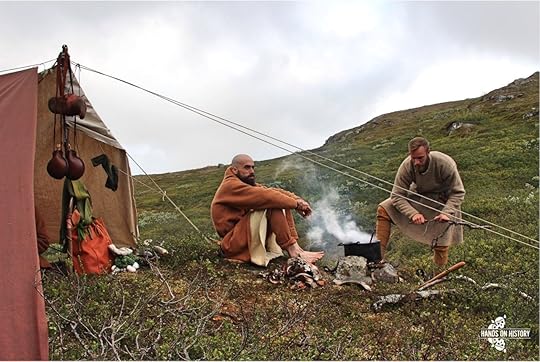
Photo: Hands on History
While this isn’t a traditional historic site or museum, Hike Like A Viking provides a unique opportunity to embrace the Viking lifestyle, even if just for a few days. Starting in Trondheim, participants will adorn authentic Viking apparel and gear to begin their journey back in history. The four-day hike is led by experienced guides and will have you navigating the Norwegian mountain region, preparing and cooking meals over an open fire, sleeping under the stars, and sharing traditional tales and songs. If that’s not enough to whet your appetite for all things Viking, cultural sites along the route date back to the most recent ice age. Multiple hikes happen each year, and you must register in advance. 

More like this: The ultimate guide to hiking the St. Olav Ways
The post The ultimate Viking tour through Norway appeared first on Matador Network.

Japanese culture in São Paulo
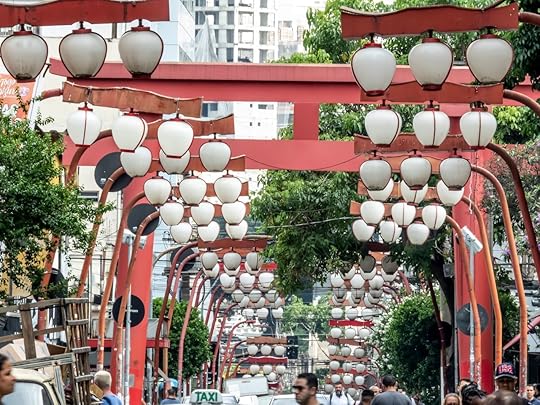
São Paulo is a thriving megacity, a hub of culture and architecture and the most populous metropolitan area in South America. Among the city’s 12 million residents is the largest concentration of Japanese people outside of Japan. The first Japanese immigrant arrived in Brazil in 1908, and today there are over one-and-a-half million people of Japanese descent in Brazil, the majority of them in São Paulo. Their influence flows through São Paulo’s neighborhoods, cuisine, and culture, and this is where you can find a taste of Japan the next time you’re in the city.
Experience Japanese art and food at the aptly named Japan House.

Photo: Gregorio Koji/Shutterstock
Created as a project by the Japanese government in its efforts to highlight Japanese culture around the globe, Japan House is in three cities: Los Angeles, London, and São Paulo. The facility is part food hall and part art museum, with special events and retail mixed in for good measure. The São Paulo location often highlights exhibitions from local and international Japanese artists while at the same time showcasing the coexistence of Japan’s very strong traditions within the city.
Dig into a pastel anywhere in the city.

Photo: Carla Nichiata/Shutterstock
One of the easiest ways to experience the Japanese culture in São Paulo is to eat pastel. This savory treat is a play on the spring roll, originally created back in 1890 by Chinese immigrants as a way to recreate a favored food with ingredients available in the city. The snack was popularized by during the Second World War by Japanese immigrants who opened the first pastelarias selling the fried treat. They did so in an effort to pass themselves off at Chinese, since there was much prejudice against them for Japan’s siding with the Axis powers in the war. Nowadays, besides finding them in pastelarias, you can do buy pasteis from open markets, a Brazilian weekly tradition in nearly every neighborhood of São Paulo.
View the work of Brazil’s most famous Japanese artist.
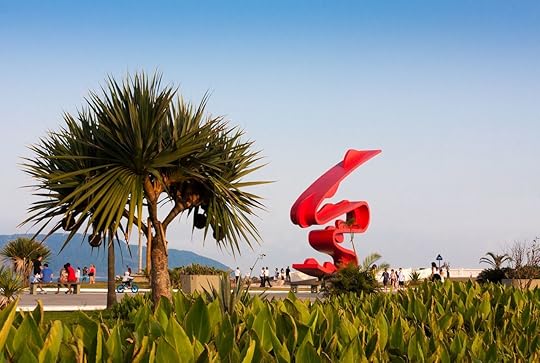
Photo: Will Rodrigues/Shutterstock
Named after Kyoto-born artist Tomie Ohtake, the Instituto Tomie Ohtake was designed to receive exhibitions from both Brazilian and international artists in the fields of architecture, design, and visual art. Ohtake actually didn’t intend to settle in São Paulo. She arrived in 1936 intending only to pay a visit to her brother but was unable to return home due to international conflict during World War II.
What makes this institute so interesting is that in honor of Tomie’s outstanding career — which spanned six decades from the 1930s to the 1990s — every exhibition focuses on the timeline of her life, leading visitors to a better understanding of Tomie’s artistic career and the world events happening as it played out. Tomie Ohtake’s art has its own special place on the building with ever-changing exhibitions going on since 2014, and since its founding in 2001, the building itself has become an iconic part of the city’s skyline. You can view one of Ohtake’s most famous sculptures on a day trip to the nearby beach town of Santos.
Recognize the Japanese influence on the city’s skyline.
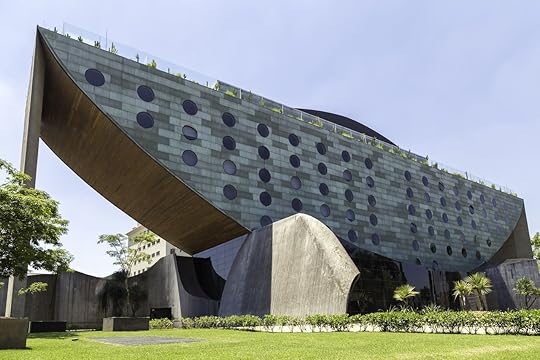
Photo: ESB Professional/Shutterstock
With its architecture designed by Tomie Ohtake’s son Ruy Ohtake, Hotel Unique is another landmark of the city. It’s boat-shaped design, with iconic circular-shaped windows like portholes, make it one of the most Instagrammable buildings in the city. It’s as unique as its name suggest and hosts artists, musicians, and scores of hipsters who pass through São Paulo. Hotel Unique is also home to the Skye Bar and Restaurant, located on the hotel’s rooftop, which has one of the best views in the entire city, along with its famous red-colored pool.
Stroll the streets of Liberdade.
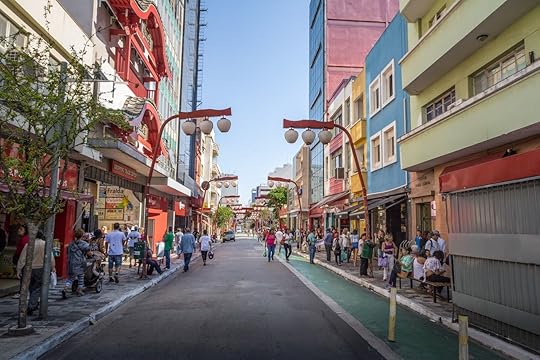
Photo: Diego Grandi/Shutterstock
The Japanese neighborhood of São Paulo, known as Liberdade, had a grim history long before the influx of Japanese immigrants. The neighborhood was once known as the place where runaway slaves were hanged and was even called Largo da Forca, or Gallows’ Square. Today’s name for the neighborhood, Liberdade, literally means freedom in Portuguese. Its new moniker reflects the positive atmosphere the Japanese immigrants have built there, as well as turning it into the best place in the city to experience Japanese culture. The streets are full of Japanese-owned stores, from authentic cuisine to Japanese skincare. You’ll know you’ve arrived as you pass the Japanese-inspired light poles on the streets, and you may recognize the Viaduto Cidade de Osaka, whose image is commonly used on postcards sent home from the city. Be sure to visit the neighborhood during weekends, as the streets fill with handicrafts and artisanal wares for sale.
And check out its iconic museum.

Photo: Jaboticaba Fotos/Shutterstock
Within the Liberdade neighborhood is the Museu Histórico da Imigração Japonesa no Brasil (Museum of Japanese Immigration in Brazil), the largest historical immigration museum in the world. The museum takes up three entire floors inside the Sociedade Brasileira de Cultura Japonesa e de Assistência Social (Brazilian Society of Japanese Culture and Social Assistance) building, and the exhibitions housed within tell the detailed story of the Japanese immigrants to São Paulo through nearly 100,000 items that belonged to them. On display, you’ll see kimonos, pictures, videos, books, and more. The museum also hosts book launches and educational lectures.
Pavilhão Japonês
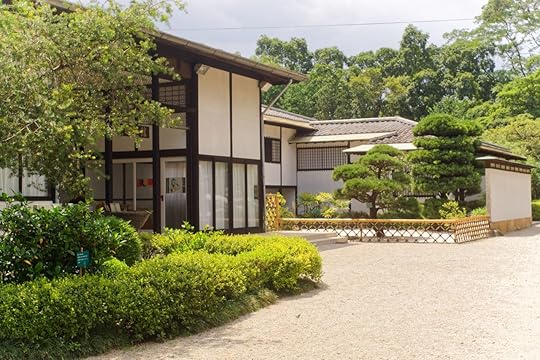
Photo: Roney Lucio/Shutterstock
Inspired by Kyoto’s Katsura Palace, the Pavilhão Japonês (Japanese Pavilion) in the expansive Ibirapuera Park contains a garden with ornamental trees and plants, along with a tea room, a carp pond, and a small exhibition of Japanese history. Parque Ibirapuera is in the heart of the city. As you make your way through, you’ll see warrior vests, pottery, and many other traditional items telling the story of Japan through the ages. 

More like this: 9 Japanese sweet treats the world needs to know about and try
The post How to experience the best of Japanese culture in São Paulo appeared first on Matador Network.

Origin of the Cuban sandwich
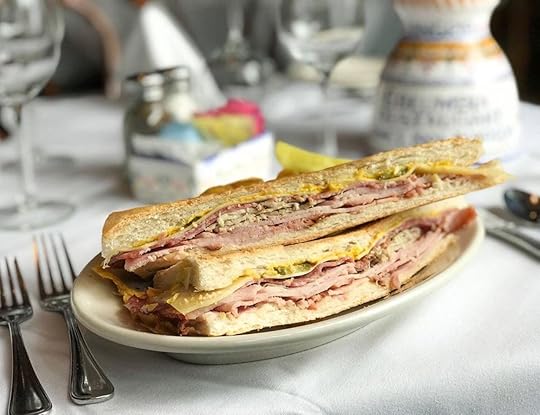
It’s an immigration story as old as America itself.
Someone is born in the United States to immigrant parents, and they assimilate, but their life is filled with little slices of where their family is from. Then they move to a city and create their own identity forged with other immigrants around them. As they grow, they move to the biggest city they can find, leaving a little of themselves behind but finding the world discovers their greatness.
In this case, the immigrant is a sandwich.
The Cuban sandwich is on menus around the world. Though you might find small variations, the most ubiquitous style includes ham, mojo-roasted pork, swiss cheese, and mustard on bread. It carries the name Cuban, but aside from the pork on the inside, the sandwich has about as much to do with Cuba as snowmobiling. But somehow, it’s become the island’s most famous export this side of Gloria Estefan.
Are there Cuban sandwiches in Cuba?
Go to Cuba and you’d be hard pressed (no pun intended) to find a Cuban sandwich anywhere. Mostly because, much like alfredo sauce, fajitas, and General Tso’s chicken, the Cuban sandwich is largely an American creation.
“I think people romanticize the culture of Cuba because they don’t understand it,” Mandy Baca, a Miami-based food writer and the author of The Sizzling History of Miami Cuisine, tells Matador. “The concept of sandwiches being a part of Cuban cuisine is not that prevalent. Sandwiches weren’t really part of the cuisine, it was more about the pork by itself. Sandwiches were what you ate late night, or hungover from being out, or after a funeral. It wasn’t something you did on a daily basis.”
At least that was the case until cigar factory workers wanted a snack.
Between 1868 and 1898, when Cuba was fighting its wars for independence from Spain, a flood of Cubans left the island and landed in Key West, Florida. At the time, Key West was home to about 80 cigar factories, which quickly filled with Cuban immigrant workers. This was when they discovered America’s classic, simple ham and cheese sandwich and gave it a Cuban twist.
“Effectively, the Cuban sandwich is just a ham and cheese sandwich,” Baca says. “[Cubans] made their version of the sandwich, which was Cuban bread, pickles, ham, roast pork, swiss cheese, and added tomato, lettuce, and mayo.”
They called this new sandwich mixto, meaning it was basically a mixture of different meats. It wouldn’t gain the “Cuban” moniker until later in the century.
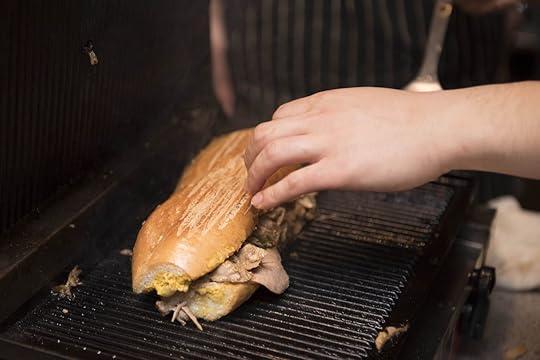
Photo: Foodfocus/Shutterstock
Sometime around 1886, a massive fire destroyed a Key West cigar factory belonging to Vicente Martinez Ybor, who opted to move his operations up the gulf coast of Florida to Tampa. He set up shop in the area that would become known as Ybor City, which was the cigar-making capital of the world for a period of time. Cuban immigrants moved with him, bringing their trademark sandwich along. As they worked side-by-side with Italian immigrants already in the area, they introduced Genoa salami to the mixto.
Around the same time — about 1896 — a Sicilian named Francisco Ferlita created a new bread at his Ybor City Joven Bakery. It was a little like a French baguette, about three feet long with a hard, crispy crust and a soft, airy inside. The top was scored with a palmetto leaf to create a canyon down the middle of the loaf. It was square on the ends and usually shortened with lard. He called it Cuban bread.
Though no hard proof exists, anecdotally the mixto became popular on Cuban bread. Thus the modern Cuban sandwich was born. The preparation is simple, but specific: Cut the bread in half, then layer ham, mojo-garlic marinated roast pork, and salami, in that specific order. Then add swiss cheese, pickles, and mustard spread on top. Lettuce, tomatoes, mayonnaise, and whether or not to press the sandwich are still topics of heated debate.
The Cuban sandwich moves to Miami
The original Tampa-style Cuban sandwich made its way down to Miami during the first half of the 20th century as The Magic City grew into the state’s major commercial center. An ad from the 1937 Miami News shows a Cuban sandwich that included salami. This is proof that at one point, Miami embraced the salami-inclusive Cuban. Things didn’t stay that way, however. When a new wave of Cuban immigrants came to Miami in the 1950s and 60s, they began to make their own modifications to the sandwich.
“In Miami, the recipe eventually changed because there is not a large Italian population here,” said Baca. “Again, the sandwich is a story of immigration.”
There is no written record of when Miami first popularized the salami-free Cuban sandwich, but Raul Galindo, who founded the Latin American Cafeteria, claims to have been the first to serve this style in 1974. Though the claim is unsubstantiated, nobody has contradicted it either, so Florida food lore says this is where the Miami-style sandwich got started. And as Miami’s Cuban population exploded through the 1980s and beyond, the city began to claim the sandwich as its own.
The Miami version has become the more commonly accepted style. It’s the salami-less “Cubano” that graces menus around the world. And even though the sandwich originated in Key West and Tampa, people associate it with both Miami and Havana.
“The story of Miami, and Cubans in Miami, and the mystique of Cuba as a whole is the more prevalent story,” Baca explains when asked why people incorrectly associate the Cuban sandwich with coming from South Florida. “Like a lot of history, it is word of mouth, and, what’s the adage? History is written by the winners? Or in this case whoever had the great marketing chops.”
The rivalry between Tampa and Miami as to who can claim the Cuban sandwich rages on, and it’s probably a rivalry more people care about than, say, the Rays and Marlins. It is indeed a story of immigration and change, and if a people’s story can be told through the evolution of a sandwich, it is most certainly the Cuban.
Best Cuban sandwiches in Tampa

Photo: Columbia Restaurant Group/Facebook
Columbia Restaurant: What started as a humble food stand in 1905 is now one of Florida’s oldest restaurants. The Cuban is made from a recipe that dates back to 1915 from the founder, Casimiro Hernandez. Sr. Columbia includes Genoa salami, doesn’t add mayo, lettuce, or tomato, and gets its bread from La Segunda Central Bakery in Ybor City.
La Teresita: The business started as a grocery store in the early 1970s before expanding with a coffee and sandwich shop. The latter won out and has expanded into a two-story restaurant that’s beloved for all things Cuban food. Also beloved is the Cuban sandwich served at La Teresita. It’s extremely affordable and, like Columbia Restaurant, forgoes the mayo, lettuce, and tomato.
Best Cuban sandwiches in Miami

Photo: Las Olas Cafe South Beach/Facebook
Las Olas Café: A corner café that’s a favorite among locals, tourists, and anyone who catches a whiff of the food and coffee as they walk by. Walk inside or order from the takeout window and you’ll shortly have a Cuban sandwich in your hands that will make you a believer in Miami-style Cuban sandwiches.
Enriquetas: A simple breakfast and lunch spot with an indoor seating area and a take-out window. It also happens to make some of the best Cuban sandwiches in the city. If you have time, sit on one of the stools and enjoy your sandwich, which is made with ham, pork, Swiss cheese, and pickles. 

More like this: You’re doing Miami wrong if you don’t try these 7 guava desserts
The post Cuba’s most famous food isn’t even from Cuba — or Miami appeared first on Matador Network.

Nanaimo Bar Trail in BC, Canada

Nanaimo, British Columbia, should be on the top of your list of places to visit, and not just because it hosts the World Bathtub Racing Championships every year. Located on the eastern edge of Vancouver Island, this city in Canada is home to the country’s favorite dessert: the eponymous Nanaimo Bar.
The original version of this classic no-bake Canadian treat has three distinct and delicious layers. The bottom is a crumbly coconut graham crust, the middle is a smooth and creamy custard filling, and the top is a layer of rich chocolate ganache. Over the years, this rich, chocolatey treat has captured Canadian hearts and inspired an ever-growing list of sweet spin-offs trying to imitate the taste, including Nanaimo bar Martinis, ice cream, and a craft beer from nearby Vancouver Island Brewing.
It’s hard to place exactly when the Nanaimo bar took over Canada. There are a variety of origin stories, ranging from early Dutch settlers to the wives of coal miners who cooked up the treat in the 1850s when the city was still known as Colville. Regardless of its origins, the city of Nanaimo boasts the title of being the bar’s birthplace. After all, as the city puts it on the website, “Of course, we know that Nanaimo bars originated in Nanaimo, otherwise they would be called New York Bars, or New Brunswick Bars.”
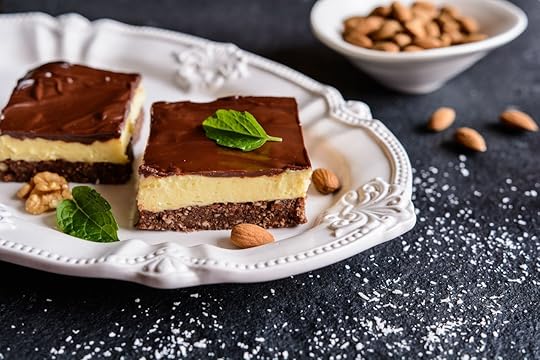
Photo: NoirChocolate/Shutterstock
According to the Nanaimo Museum, the first known recipe for the bar was published as part of a local fundraising effort in the 1952 edition of the Women’s Auxiliary Nanaimo Hospital Cookbook. At the time, however, the bar was given the simple, unassuming name of Chocolate Square. One year later, in 1953, a similar recipe appeared in Edith Adam’s Cookbook. This time, it was given the name that it’s known for today.
By the 1980s, Nanaimo Bars had become a local sensation. So much so that the city’s mayor hosted a contest in 1986 to find the all-time-best Nanaimo bar recipe. The contest took place over four weeks, and more than 100 variations were submitted. The judges went through a tasting session that was no doubt delicious but also a little arduous. But there can only be one best Nanaimo Bar. A local woman named Joyce Hardcastle made that best Nanaimo bar for the contest, and her recipe became the official version (she later told the Food Network that the secret is unsalted butter).
Despite the contest, it’s hard to settle for a single Nanaimo Bar recipe today. The treat is served around the city, with everything from deep-fried to cupcake-ified versions sitting alongside the classic. You don’t have to try one and be done with it. The Nanaimo Tourist Board offers visitors the opportunity to make up their own mind about where to find the best Nanaimo Bar in the region through a self-guided tour along the official Nanaimo Bar Trail. The route has 39 different places throughout the City of Nanaimo and the surrounding area.
These are the essential stops to make on the trail. Be sure to pack a pair of your stretchiest pants.
Best Nanaimo Bars in Nanaimo, Canada

Photo: Hearthstone Artisan Bakery/Facebook
Hearthstone Artisan Bakery: This bakery opened in late 2015 and has been making top-quality baked goods ever since. Hearthstone uses locally milled and sourced products, and everything is baked in-house. This includes the famous Nanaimo Bars, which have even been featured on Canada’s Food Network. There are always three versions of the sweet delights on their menu: Classic, Peanut Butter Crunch, and a rotating monthly feature. Some of the monthly flavors have included cappuccino, raspberry white chocolate, milk chocolate mini egg, pumpkin spice, and candy cane. In 2018, Hearthstone was voted by local residents as one of the top places in the city to devour a Nanaimo bar.
A Wee Cupcakery: Nanaimo’s first and only artisan cupcake bakery is located in the Old City Quarter, and it specializes in a classic bar. Amidst the array of beautifully designed cupcakes, donuts, and macarons, you can find the tastiest version of the classic Nanaimo Bar at this shop.

Photo: Smokin’ George’s BBQ/Facebook
Smokin’ George’s BBQ Restaurant: At first glance, this popular local BBQ joint might not seem like a place to indulge in the city’s famous sweets, but Smokin’ George’s BBQ offers far more than meat smothered in homemade sauces and freshly baked cornbread. Located in downtown Nanaimo, there’s always a new dessert creation on the menu, including Bacon Topped Nanaimo Bars or a Dulce de Leche version. Like Hearthstone, Smokin’ George’s was also voted by city residents as one of the top places to try a Nanaimo Bar.
Modern Cafe: Open since 1946, Modern Cafe is located in the downtown core of Nanaimo. Look for the neon sign that adorns the entrance. Inside, you’ll find a casual atmosphere and a selection of choices for breakfast, lunch, and dinner. But, if you’re dedicated to diversifying your tasting experience on the Nanaimo Bar trail, you won’t want to miss the famous Nanaimo Bartinis. 

More like this: Don’t visit Slovenia’s Lake Bled without eating this creamy cake
The post Canada’s national dessert has a food trail every dessert lover needs to try appeared first on Matador Network.

Black panther seen in Africa

For the first time in nearly 100 years, a black panther (also called black leopard) has been spotted and photographed on the African continent.
Black leopards are more commonly found in Southeast Asia, and though there have been a few reported sightings of the species in Africa, only one was confirmed in Ethiopia in 1909.
A research team from the Institute for Conservation Research of San Diego Zoo Global and the Loisaba Conservancy in Kenya spotted the cat in Laikipia County, just north of Nairobi, Kenya.
View this post on Instagram
Strike bringing Belgium to a halt
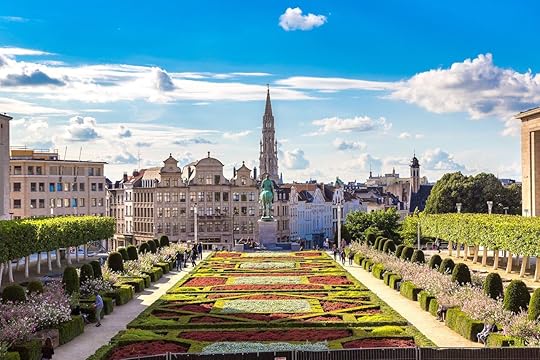
Belgium is in the midst of a crippling 24-hour national strike, stopping all flights into and out of the country, bringing public transportation to a halt, and leading to protests and blockades outside factories. The strike began at 10:00 PM on Tuesday, organized by Belgium’s three main workers’ unions with nearly four million members. They’re also joined by government workers across the country, prompting the temporary closure of several public schools, nurseries, breweries, and sports facilities. Since prison guards have also gone on strike, they are being replaced by police officers in most prisons.
Robert Verteneuil, president of the General Federation of Belgian Labor, explained the strike’s objectives on public radio Wednesday morning. “What we want,” he said, “is to tell employers, whoever they are, that we’re sick of them putting all the dough that we create in their pockets. It’s time to give some of it back to the workers.” The chief cause of the strike is workers protesting slow pay raises, which are limited to 0.8 percent over the next year.
Limits for pay and working conditions in Belgium are typically negotiated each year by workers’ unions and business groups. The government then translates those negotiations into actual policy. This year, negotiations hit a snag when workers rejected the employers’ proposed 0.8 percent maximum pay raise.
It’s unclear whether the strike will result in policy change, but its effects are being felt all across Belgium. Striking air traffic controllers led to the cancellation of over 400 flights since Tuesday night and a virtual shutdown of the country’s airspace. Hundreds of supermarkets have closed due to understaffing, half the country’s trains were canceled, and over 30 ships were stranded offshore in Antwerp, waiting to enter port, because of striking dock workers. When all is said and done, the strike is expected to cost the Belgian economy tens of millions of euros.
Verteneuil believes workers “who produce the economy, who allow wealth to be created … those workers need to get their fair share. Without workers around machines and in the offices, the economy doesn’t work; that’s today’s message.” 
H/T: The New York Times

More like this: How to take in Brussels’ famous comic strip art
The post National strike bringing Belgium to a standstill, canceling flights and schools appeared first on Matador Network.

The best savory breakfasts

There are two types of people in this world: those who like sweet breakfasts, and those who like savory breakfasts. The latter prefers to leave the cavities and the inevitable sugar crash to the former. Around the world, savory breakfasts are generally more prevalent than sweet, and even the countries with the best sweet breakfasts can’t compete with the best savory breakfast traditions.
These are the best countries for savory breakfast lovers.
South Korea
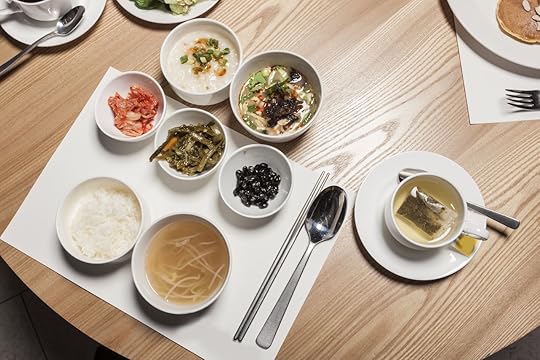
Photo: Early Spring/Shutterstock
Breakfast in Korea is something of a fluid concept. The general rule of thumb is that if it’s being cooked in the morning, it’s breakfast. Which is perfect for people who can eat lunch and dinner all day long. Expect rice and a mouth-watering array of banchan (various side dishes to go with the rice) like cold cucumber soup, galbi (grilled short rib), stewed fish, pickled veggies, kimchi, and seasoned kelp. Traditional Korean food is one of the healthiest cuisines in the world, and the balanced breakfast is part of the reason why. For people in need of a quick breakfast fix, street vendors serve up a Korean take on the breakfast sandwich called gaeran tost-u, which is a toasted egg sandwich with cabbage and topped with a generous sprinkling of brown sugar. Sweet. Salty. Perfection.
Turkey
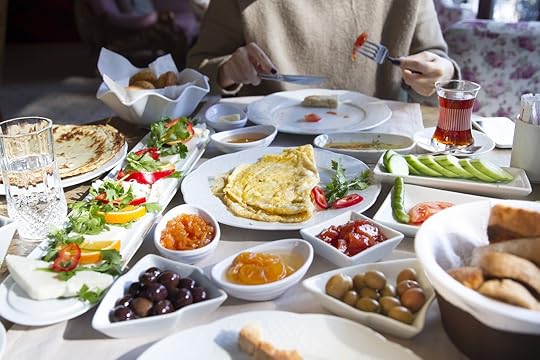
Photo: Nadir Keklik/Shutterstock
Turkey has the best breakfast in the world, hands down. The country doesn’t mess around when it comes to the first meal of the day. On an average weekday in Turkey, expect to tuck into a mini buffet of seeded bread, olives, cheese, butter, honey, jam, freshly sliced cucumbers and tomatoes, and boiled eggs or an omelette. The weekend is when things really kick off, though, when bowls of hot sucuk (dried Turkish sausage) and menemen (a dish of finely sliced tomatoes mixed together with green peppers, onion, olive oil, and eggs) often make an appearance. Some cafes and restaurants also serve börek, which is a thin sheet of dough stuffed with cheese, meat and/or veggies, and is then baked until flaky.
Japan
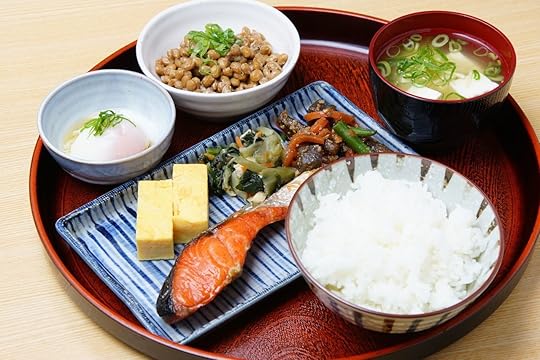
Photo: fuumi901/Shutterstock
In Japan, breakfast starts with rice. Then any of the following is added: miso soup, a raw egg mixed with soy sauce, fermented soybeans, akoten (crisp-fried fish), nori tsukudani (blended seaweed paste), and as many pickles as you can get your hands on. All of that falls under the category of traditional breakfasts. These days, most working people simply go for quick piece of toast, cereal or pancakes, or a donut and hot coffee to go.
England

Photo: valeriiaarnaud/Shutterstock
No one would ever suggest that the famed full English breakfast is by any means healthy. But when it comes to a hearty start to the day, it’s hard to beat all that’s offered in the UK. The traditional full English includes thickly cut bacon, sausages, fried eggs (or poached if you’re posh), fried mushrooms, grilled or fried tomato, buttered or fried toast, black pudding, baked beans, and, sometimes, bubble and squeak (fried mashed potato and cabbage). It’s all washed down with a cup of tea or coffee.
Different regions have their own take. In Scotland, it’s called the full Scottish and the bread is replaced with grilled oatcakes and occasionally haggis, tattie scones (griddle-fried potato cakes), and white pudding. In Ireland, the full Irish has hash browns, potato bread, or boxty (potato mash pancakes) on your plate. The Northern Irish take things up a notch with their famed ulster fry, which features the addition of soda bread (a flat bread which is fried until crispy and golden) and vegetable roll, which is made out of minced beef, not vegetables.
Bulgaria

Photo: Hristo_Chorbadzhiyski/Shutterstock
You have to kick your diet to the curb when eating breakfast in Bulgaria. Think hot milk-soaked bread laced with butter and sugar, and deep-fried dough served with lashings of cheese. And you can’t forget the jewel in the Bulgarian breakfast crown: banitza, a traditional dish made from layers of egg-soaked filo pastry that’s baked to crispy perfection. It can be enjoyed hot or cold, eaten as the star of the show or paired up with cool yogurt and washed down with boza, a traditional fermented malt drink made from maize corn.
Iran

Photo: Sooper Chef/Shutterstock
Haleem — the go-to morning meal in Iran — sounds simple, but it packs some serious flavor. It’s essentially meat and wheat that’s cooked, blended, seasoned, and served in hot bowls topped with mint leaves, lemon juice, ginger, fried onions, and chillies. Scoop it up with naan or pad it out with hot rice and you’ll be stuffed until lunch. It’s notoriously tricky (not to mention time consuming) to make, so be sure to compliment the chef if you’re lucky enough to find this on your morning menu.
Venezuela
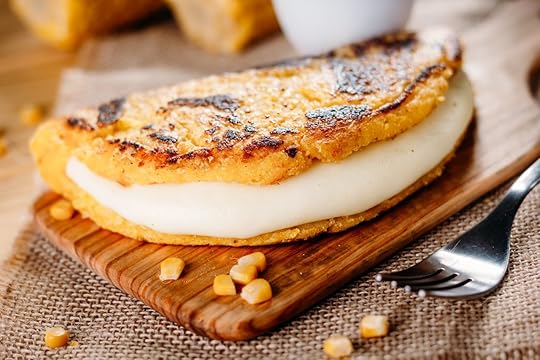
Photo: nehophoto/Shutterstock
Cachapas is the Spanish word for “crumpets,” and this version is the number one breakfast snack in Venezuela. It’s essentially a dough made from fresh ground corn, which is then rolled into thick pancakes and fried on a flat grill called a budare. In one variation, the dough is packed into dry corn leaves and boiled. Look for cachapa de hoja on the menu if you want to try this version. Cachapas are traditionally paired with a soft, white, mozzarella-like cheese known as queso de mano, though it’s not uncommon to see more elaborate concoctions topped with crispy fried pork, cream, or jam.
Mexico
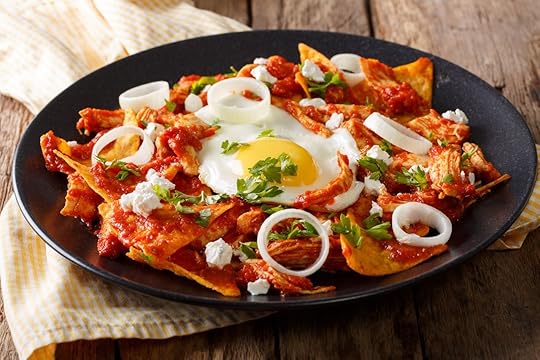
Photo: AS Food Studio/Shutterstock
Chilaquiles are the ultimate Mexican comfort food. It began life as a thrifty way to use up stale tortillas, which were cut into strips and simmered in salsa until soft and then soaked in spicy goodness. The dish varies slightly from region to region. In central Mexico, the salsa is poured on last minute so the tortillas keep their crunch. In other regions, your salsa may be spicy red or creamy green mole. It’s usually served with a side of refried beans, although more lavish versions are available with melted cheese, eggs, veggies, pork, or lamb.
Thailand

Photo: siripatsee/Shutterstock
One of Thailand’s most popular breakfast foods is jok, which is essentially a rice congee, or porridge, that can be found throughout Southeast Asia. In Thailand, it’s traditionally served with a raw egg plopped in the middle and topped with an assortment of tasty extras like minced pork or beef, fresh spring onions, fried garlic, sliced ginger, pickled radish, and patongko (a stick of crispy fried dough). Although popular in the morning, you can find eateries serving it throughout the day, sometimes plain with an assortment of tempting sides to go with it.
Singapore

Photo: Eunice Yeung/Shutterstock
What’s a typical Singaporean breakfast? Trick question! In Singapore, breakfast doesn’t differ much from lunch and dinner. Popular options include stir-fried noodles, noodle broth, and rice porridge. But if we’re going to award one dish the title of national breakfast, it’s kaya toast. The crispy toast is topped with a thick layer of sweet pandan-scented coconut custard, soft-cooked eggs, white pepper, and soy sauce. Eat it with a steaming cup of hainanese kopi (black coffee laced with a generous dollop of butter) and you’re ready to roll. 

More like this: The 7 countries with the best sweet breakfasts
The post The 10 best savory breakfasts in the world appeared first on Matador Network.

Matador Network's Blog
- Matador Network's profile
- 6 followers



